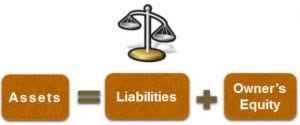Income Summary Journal Entry Example

The income summary account is a temporary account into which all income statement revenue and expense accounts are placed at the end of an accounting period. The net amount put into this account equals the business’s net profit or loss for the period. Shifting revenue out of the income statement, therefore, entails debiting the revenue account for the total amount of revenue recorded in the period and crediting the income summary account. At the end of a period, all the income and expense accounts transfer their balances to the income summary account.
How To Close?
A net loss gross vs net would decrease owner’s capital, so we would do the opposite in this journal entry by debiting the capital account and crediting Income Summary. After these entries, the balance in the income summary account should represent the net income or loss for the period. In this case, it’s a credit balance of $15,000 ($100,000 – $85,000), which represents the net income.
What Is the Difference Between an Income Summary and an Income Statement?
Also, there’s no need to create an income summary account since you can easily pull up the Profit and Loss report. LO 5.4Describe the progression of the three trial balances that a company would have during the period, and explain the difference between the three. LO 5.1The account called Income Summary is often used in the closing entries. Notice that the balance of the Income Summary account is actually the net income for the period.
Profit and income Statement

The allocation of dividends https://x.com/bookstimeinc to relevant accounts ensures accurate financial reporting and decision-making. These transactions shape the organization’s financial standing, influencing shareholder confidence and potential investment opportunities. Understanding the impact of dividend transactions on the income summary account is essential for maintaining transparency and accountability in the financial close-out process. For instance, when a company earns revenue from sales, it increases the income summary account. Similarly, when expenses such as salaries, utilities, and rent are incurred, they decrease the income summary account. Dividend payments to shareholders also affect the income summary account.

Take note that closing entries are prepared only for temporary income summary account accounts. The Retained Earnings Account, therefore, has a direct impact on the balance sheet, as it contributes to the overall equity position of the company. Understanding the distinctions between these two accounts is crucial for accurate financial statement reconciliation and an in-depth comprehension of the company’s financial health.
- Dividends are close to the income summary and retained earnings.
- After preparing the closing entries above, Service Revenue will now be zero.
- After passing this entry, all revenue accounts will become zero.
- If the credit balance is more than the debit balance, it indicates the profit; if the debit balance is more than the credit balance, it shows the loss.
- Understanding the impact of dividend transactions on the income summary account is essential for maintaining transparency and accountability in the financial close-out process.
The debit to income summary should agree to total expenses on the Income Statement. We need to complete entries to update the balance in Retained Earnings so it reflects the balance on the Statement of Retained Earnings. We know the change in the balance includes net income and dividends. Therefore, we need to transfer the balances in revenue, expenses and dividends (the temporary accounts) into Retained Earnings to update the balance.

What Happens to the Income Summary Account at the End of an Accounting Period?

Companies record revenues and expenses on a quarterly rather than continuous basis, and account balances from one period are not added to those from the next. The balances in the temporary accounts are retained in the income summary account until final closing entries are completed. Once all temporary accounts have been closed, the balance in the income summary account should equal the company’s net income for the year. The income summary account is an account that receives all the temporary accounts of a business upon closing them at the end of every accounting period. This means that the value of each account in the income statement is debited from the temporary accounts and then credited as one value to the income summary account. The purpose of closing entries is to prepare the temporary accounts for the next accounting period.
Does the income summary have a normal balance?
For corporations, Income Summary is closed entirely to “Retained Earnings”. The Income Summary balance is ultimately closed to the capital account. Now for this step, we need to get the balance of the Income Summary account. In step 1, we credited it for $9,850 and debited it in step 2 for $8,790. In many computerized accounting systems, this process is performed automatically, and the income summary account is not visible to users. However, it remains a key concept in understanding how the accounting cycle works, especially in manual or educational contexts.



Leave a Reply